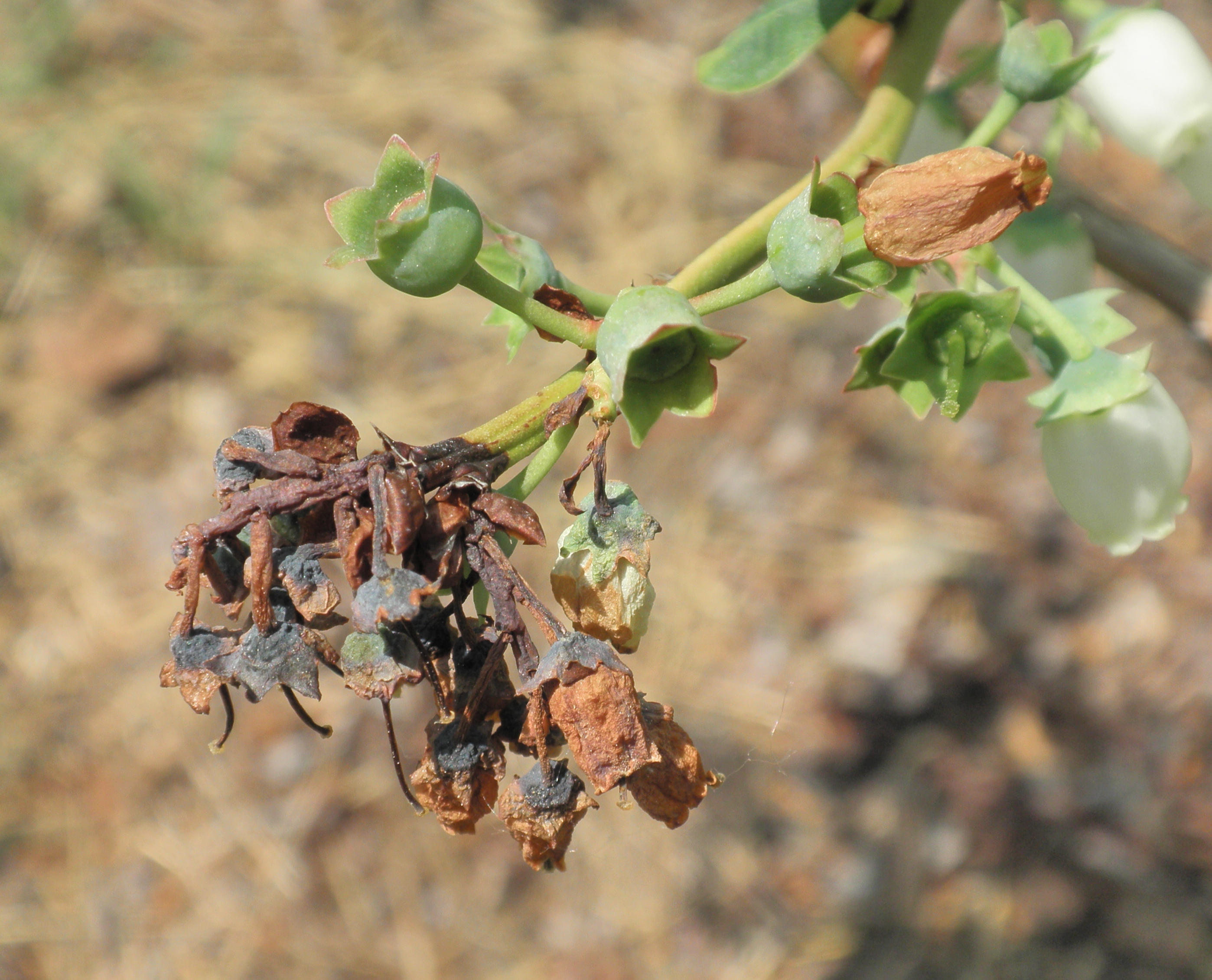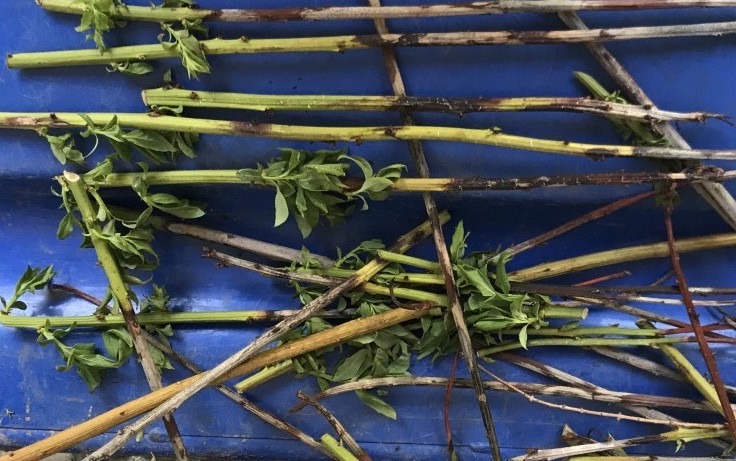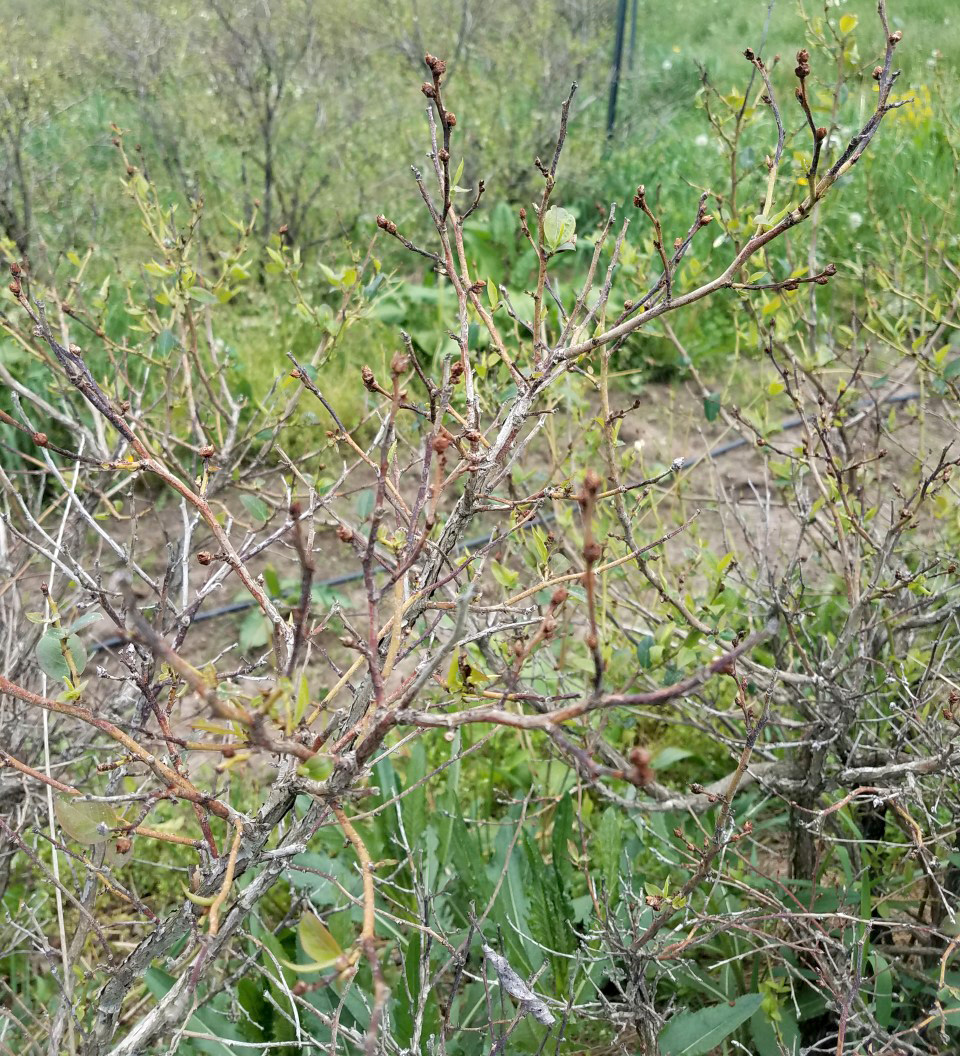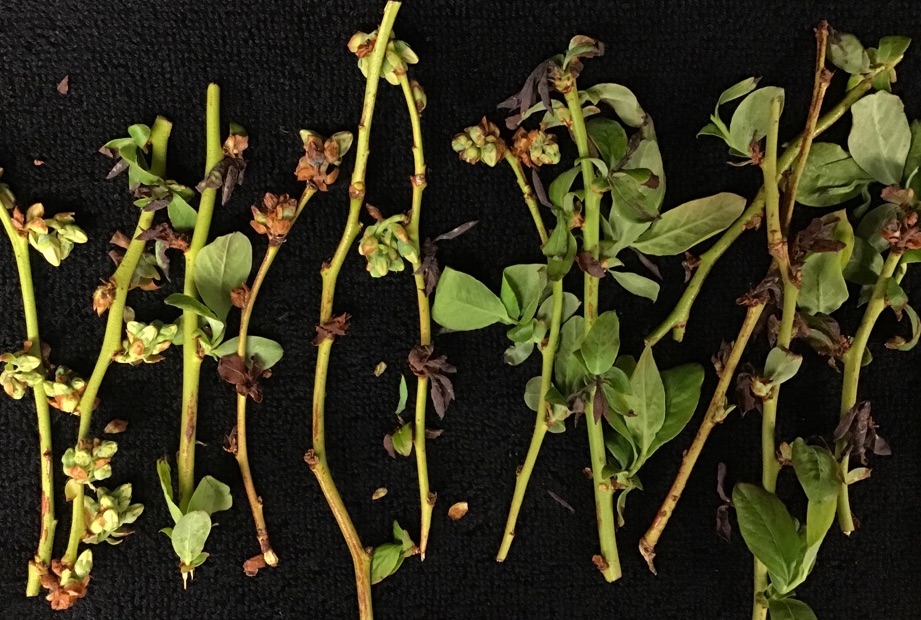Twig and blossom blights in Michigan blueberries
Freezes and disease cause similar symptoms on blueberry plants. Here is what to look for in your field.

We are three weeks past the May 9, 2020, freeze that hit southwest Michigan. Growers have been evaluating flowers for freeze injury. Besides damage to blossoms, we see dead shoot tips and damage to the tips of new shoots from the freeze. We are also seeing disease symptoms in shoots and twigs. Blighted tissue is apparent in many fields. This damage manifests as twig, blossom and cane blights. These blights may be due to the freeze, disease or a combination of both. The weather has turned warm and wet, causing blueberries to grow rapidly. Warm, wet conditions are also good for disease infections. When scouting fields, keep in mind the following:
- Death of the new shoot tip, which stops growth, is usually a symptom of a recent freeze (Photo 1).
- Death of the new shoot is a symptom of mummy berry shoot strike.
- Dieback of the woody shoot tips and blighted blossoms are usually symptoms of several different diseases.
Several fungi and a least one bacterium can cause blight symptoms in blueberry tissues. These diseases are often hard to distinguish from each other on symptoms alone (see table below).
|
Disease (causal agent) |
Shoot blight (Yes/No) |
Blossom and early green fruit blight (Yes/No) |
|---|---|---|
|
Anthracnose (Colletotrichum acutatum) |
Yes |
Yes |
|
Botrytis blight (Botrytis cinerea) |
No |
Yes |
|
Mummy berry (Monilinia vaccinii-corymbosi) |
No |
Yes |
|
Phomopsis blight (Phomopsis vaccinii) |
Yes |
Yes |
|
Pseudomonas canker (Pseudomonas syringae) |
Yes |
Yes |
Colletotrichum (anthracnose) and Botrytis are often the cause of infections during wet seasons. The cause of blighted shoots and blossoms is difficult to identify unless fungal growth is visible. Blighted blossoms can also be caused by Phomopsis. Phomopsis can be identified by a brown discoloration of the twig that bears the flower cluster (Photo 2). Blighted leaves are often blamed on Botrytis infections during extremely wet conditions.

We have received many blueberry samples with blight symptoms and pathogens present. Many can be traced back to freeze damage that occurred earlier in the season.
- One sample had characteristic anthracnose symptoms on shoot tissue (Photo 3). This sample was of shoot dieback that occurred last year, and Colletotrichum (the fungal pathogen) had overwintered in the infected tissue.
- We have also received pictures of shoot blight where flower buds failed to open, and we suspect it to relate back to freezes in mid-April (Photo 4).
- Finally, we have received samples where leaves grew briefly but then became blighted and died. This looks similar to a mummy berry infection, but no characteristic conidia were observed. This also was likely related to early season freeze damage (Photo 5).



If you want more information about your blighted samples, you need to submit actual samples to Plant & Pest Diagnostics at Michigan State University for a positive identification.
Control methods for blighted tissue
Chemical options
Controls are the most effective if they are applied prior to blight infections. Pseudomonas canker is caused by a bacterium and fungicides do not control bacteria. No antibiotics are registered in blueberries. Early sprays of copper can reduce bacterial canker. Target it early next spring, not now after bloom.
Research on anthracnose and phomopsis blight has shown that most twig blight and blossom infections occur at bud break. Many fungicides have good activity against mummy berry and phomopsis blight. Colletotrichum infections require warm and wet conditions. They can occur before, during and after bloom. Bloom and post-bloom fungicide spray target these infections.
As we transition from pre-bloom to post-bloom disease control, careful choice of fungicides to control the disease is important. Several fungicides are rated good to excellent at controlling the various fungi that cause twig blight. MSU Extension annually updates the Michigan Fruit Management Guide (E0154). This resource has good information about fungicide choices based on disease and fungicide effectiveness. We recently posted an updated list of fungicide efficacy against anthracnose and alternaria fruit rot. For more information, refer to “Blueberry growers need to focus on anthracnose fruit rot as bloom ends.”
Other control methods
In addition to chemical options, there are several cultural control strategies you can deploy. Mainly, you are trying to reduce sporulation by 1) minimizing overhead irrigation and 2) timing irrigation to coincide with natural dew formation.



 Print
Print Email
Email